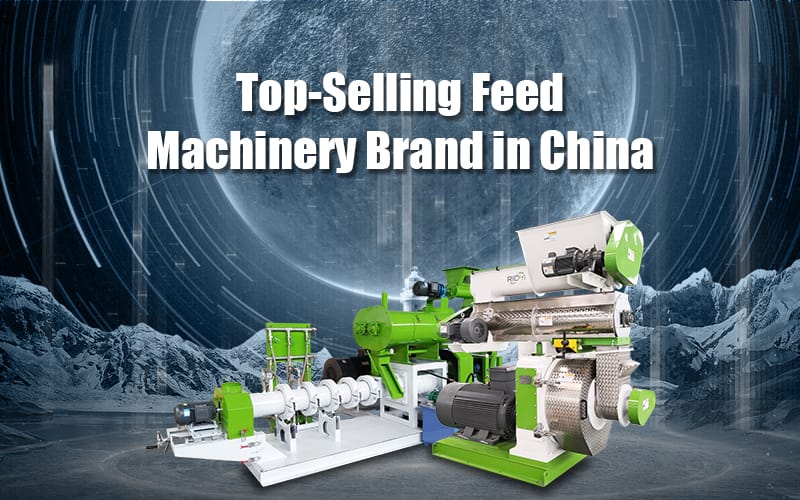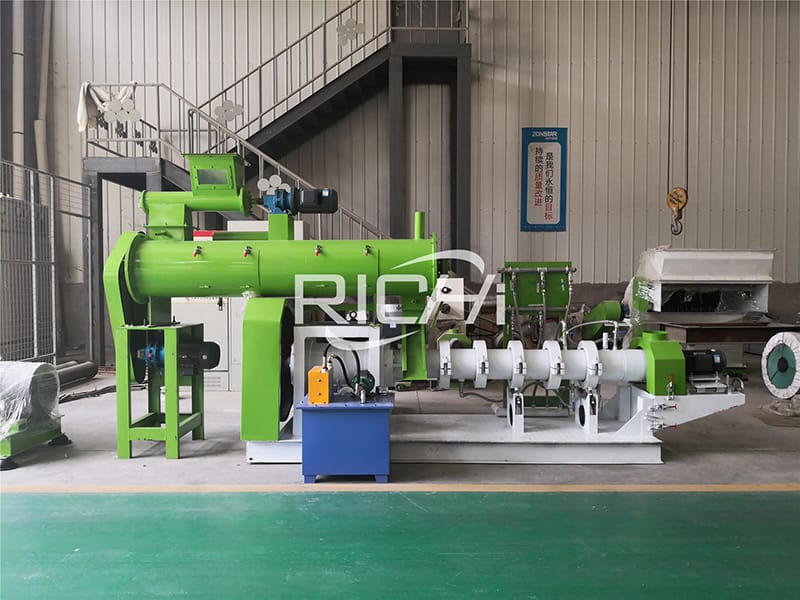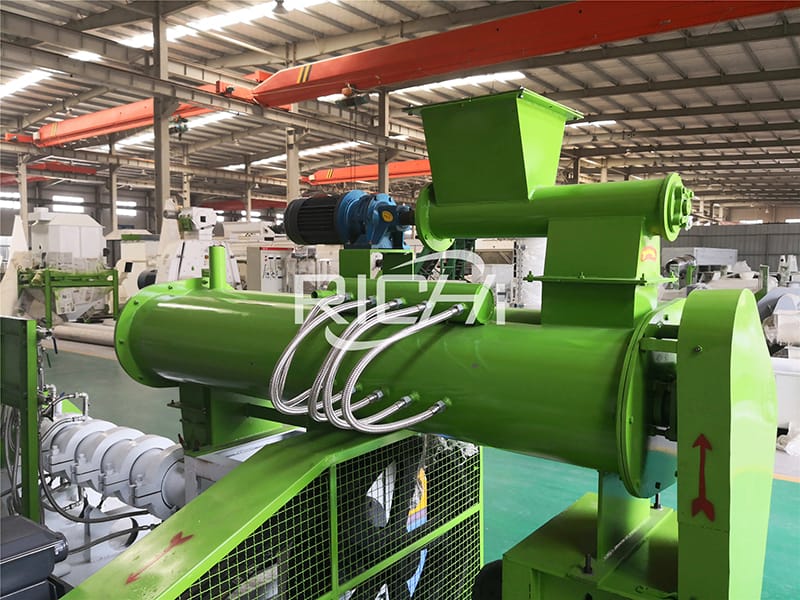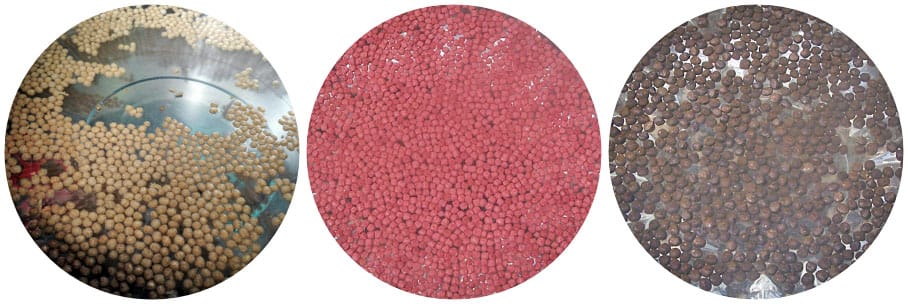Extruded fish feed is more and more popular among farmers because of its balanced nutrition, convenient transportation, and good palatability. However, the quality of extruded feed is uneven due to differences in technology and equipment limitations.

1.What is fish feed extruder machine?
Fish feed pellet extruder is the most important fish feed processing equipment in the fish feed extruded process, which directly affects the palatability and maturation degree of extruded feed. How to give full play to the advantages of equipment and technology in the pelleting process, improve the quality of conditioning, and ensure product quality and nutrition The balance is not lost, which is an important practical problem of the puffing process.
The main model for producing extruded feed is screw extruder for fish food, which has two main structural forms, namely single screw and twin screw extruder. In the feed production, the screw aquatic feed extruder for fish food is used as the mainstay.
2. Working principle of single screw fish feed extruder for pellet
Single-screw fish fodder extruder is mainly composed of feeding device, conditioner, screw extrusion cavity, forming template and cutter, parameter detection and control system, and driving power. The powdery and granular raw materials containing a certain amount of starch (above 20%) are uniformly fed into the conditioner from the rotary feeder, and the humidity and temperature are adjusted in the conditioning room. The temperature and humidity of the material are uniform and mixed after mixing . The quenched and tempered material is fed into the screw extrusion cavity. The screw in the extrusion cavity is usually made into a geometric shape with variable diameter (tooth root diameter) and variable pitch, so that the space volume of the extrusion cavity gradually decreases along the material advancing direction , Under the stable screw speed, the extrusion force of the material gradually increases, and its compression ratio can reach 4-10. At the same time, the movement of the material in the cavity is accompanied by strong shearing, kneading and friction.Sometimes, according to the needs, the raw steam flowing in the cavity jacket can be used to heat the material on the wall. The result of this joint action makes the temperature of the material rise sharply (110~200℃), and the starch in the material will immediately gelatinize , The entire material becomes a molten plastic colloid.
Before extruding the template, although the temperature of the water content in the material is very high, the water generally does not turn into water vapor under a correspondingly large pressure. The pressure is suddenly sudden when the material is discharged from the extrusion die hole. When the pressure drops to one atmosphere, the water quickly turns into superheated steam to increase the volume, and the volume of the material is also rapidly expanded. The further evaporation of the water vapor results in the reduction of the physical water content. At the same time, the temperature also drops quickly, and the physicochemical starch immediately condenses. , The escape of water vapor leaves many micropores in the condensed colloidal material. The so-called puffing is named based on such principles and results. The continuously extruded column or sheet puffed products are cut by the rotary cutter and sent to the post-processing sections such as cooling, drying and spraying. The screw extruder integrates the functions of conveying, heat exchange, stirring, pressurization, kneading and shearing, and completes a series of conditioning, steaming, sterilization and butterfly forming on one equipment Operate the process continuously.

3. The main structure of single-screw aquatic feed extruder for fish
The main body of the single-screw fish fodder mill extruder is composed of a feeding device, a conditioner, a screw extrusion cavity, a template and a cutter device.
(1) Feeding device and conditioner
The structure of the feeding device and conditioner is similar to the screw feeder and paddle conditioner used in other pelletizers. The conditioner is installed between the feeding device and the screw extrusion cavity. In the conditioner, according to the nature of the raw material and the requirements of the product, the humidity and temperature are adjusted by adding water or raw steam. Usually, the moisture content of the powder raw material is between 15% and 30% (wet basis). Increase to 70~98℃. While spraying water and raw steam, it is accompanied by stirring and mixing to make the temperature and humidity of the materials uniform, and then the quenched and tempered materials are sent into the screw extrusion cavity in turn.
(2) Screw extrusion cavity
The screw extrusion cavity is composed of an extrusion screw and an extrusion cavity barrel, which are the key components of the screw extruder. The extrusion cavity cylinder (with or without jacket) is a static part, which is fastened to the machine base. The screw is located in the center of the barrel, and the drive motor is decelerated by the reduction box and then drives the screw to rotate at a certain speed. The working principle of the screw drag pump can be used to describe the process of material being transported and discharged in the extrusion cavity, that is, the material that falls into the screw tooth groove, along with the rotation of the screw, is moved to Extrusion mouth. However, if the material fills the tooth grooves and tightly adheres to the screw and rotates with the screw, when the circumferential friction between it and the inner wall of the barrel is less than the friction between it and the screw tooth groove, the material will only follow the screw.
Rotating motion will cause the sliding wall to spin and lose the material conveying function. To a certain extent, it is impossible for materials to re-enter, and there is no output of puffed products. This kind of operation process only converts the mechanical energy into frictional heat energy and wastes power consumption. In order to overcome this disadvantage, grooves can be provided in the radial and axial directions on the inner surface of the cylinder. After opening the ring grid and linear groove, the movement resistance of the material in the cavity along the radial and axial directions is increased, and the idling phenomenon of the sliding wall is avoided.
They can also enhance the shearing and kneading effect of the material in the extrusion cavity. Generally, the cylinder can be divided into several sections along the axial direction. Loop each section on the screw, and then use bolts and positioning pins to connect each section into a whole. This structure is more convenient for disassembly and assembly, and it is also convenient to remove residual materials on the inner wall after use. In addition, the heating medium, temperature and heat transferred in each section of the jacket can also be adjusted separately according to process requirements. The screw is the main working part of the extruder, and its geometric structure is more complicated. The structural parameters and working parameters of the screw directly affect the working performance of the extruder. The larger the ratio of the screw length to its diameter, the longer the material stays in the cavity, and the more fully pressed kneading and gelatinization.

Screws with deep tooth grooves, larger pitch and smaller tooth width have a correspondingly larger space volume, so larger output can be obtained at a certain speed. The multi-head screw has a better pressure and heat transfer effect due to the increased contact area between the tooth surface and the material, but the space volume is correspondingly reduced. In different stages of the extrusion process, the working parameters are also different. Once the appropriate diameter of the screw is determined, the other parameters of the screw can only be changed to adapt to the requirements of different sections. The screw and the barrel are divided into three different working sections along the length direction, namely the feeding and conveying section, the kneading and squeezing section and the baking and gelatinizing section. The temperature and material state in the cavity also change continuously along the length direction.
According to the different working parameter requirements of each section, the structural parameters of each section of the screw are also different. Generally, the volume between the inner wall of the barrel and the screw gradually decreases from the feed port to the extrusion port. The ratio is called the compression ratio, which reflects the degree of volume compression of the material during the entire extrusion process. A certain compression ratio can be achieved by increasing the diameter of the screw bottom (that is, gradually reducing the tooth height) or reducing the pitch, etc., to meet the requirements of increasing pressure along the length. In this way, the volume formed between the inner cavity of the cylinder and the outer contour of the screw gradually becomes smaller, the volume of the material must be gradually compressed, and the pressure gradually increases. In order to meet such complex process requirements, the new multi-piece assembly screw is assembled by several single-head screws with different pitches sequentially sleeved on the drive shaft. According to different processing requirements, different screw components can be conveniently selected.
(3) Forming die plate
The extrusion molding template is fixed to the end of the cylinder with bolts. The flow area from the template orifice is much smaller than the flow area in the cavity, so the template first throttles and pressurizes the raw material to be extruded The effect of this causes a great pressure difference before and after the orifice. The material is formed through the orifice of the template. According to the different requirements of the product shape, there will be a variety of molding dies. The compound molding die can manufacture the sandwich extruded pellet feed, which should be a new way to improve palatability and reduce the loss of trace feed.
(4) Cutting mechanism
The continuously extruded puffed products are cut into uniform pellets by the cutting mechanism. A cutting motor is usually designed to drive the cutter frame to rotate. The rotation speed of the cutter can be adjusted by a variable speed device. The faster the cutter speed, the shorter the length of the product segment (the speed range of the variable speed rotary cutter is 500~600r/min ). There is a certain gap between the cutter and the extruded template to avoid collision and friction between the rotating cutter and the template.

4. Operating characteristics of screw fish feed extruder machinery
The variety, humidity, particle size and dough rheology of raw materials and puffed products are important factors for selecting and determining the type and operating parameters of the fish feed puffing machine. For most extruded feed products (humidity less than 10%), use models with high shear kneading and high temperature (150~200℃) operating parameters to make the starch in the raw materials fully gelatinized. To obtain a higher shear strain rate, the screw speed can be increased, and it is advisable to choose a screw with a short tooth shape. The structure and operating parameters of this type of machine are also suitable for the extrusion processing of organized vegetable protein. Conversely, for the production of semi-dry feed products (humidity of about 25%), or where the purpose of extrusion is to produce shaped pellets without expansion, it is advisable to use models with low shear and lower Operating temperature. Since the required shearing effect is low, the tooth height of the screw may be smaller. The operating temperature usually does not exceed 90°C.
5.Comparison between single and twin screw food extruder for fish feed pellets
Compared with single screw fish food extruder, twin screw fish food extruder has the following advantages:
(1) The production rate is high, up to 98% or higher.
(2) The particles are well formed and the shape of the particles is uniform. The ejection pressure of the twin-screw is very stable to ensure consistent particle molding.
(3) The unique strong pumping capacity of the twin-screw ensures that there is no backspray or blockage. After emphasizing the quality, the steam content in the material is relatively high, and the single screw is prone to steam overflow and reverse injection in the feeding area, resulting in unstable material flow and blocking the machine, while the twin screw will not cause similar situations.
(4) Continuous and stable production of various small particle products. When producing particles with a diameter of 2mm and below, the working condition of the single screw is unstable, the yield rate will drop sharply, and the material type will also deteriorate.
(5) Density control is more stable and reliable. The material is melted more fully and evenly in the twin-screw barrel, which can control the production of floating water and submerged water Material and slow sinking products.
(6) It has a wide adaptability to formulas, and is more suitable for high-energy formula production. The twin screw can produce high-energy formula with a fat content of 11~13% (foreign materials say it can reach 17%), while the single screw generally does not exceed 6~8%.
(7) Easy to operate and stable production process.
Because of the many advantages of twin-screw fish feed extruder machine compared with single-screw fish feed extruder machine for aquatic feed, we recommend that twin-screw extruders should be preferred when the budget is sufficient. However, the investment and production cost of the twin screw feed pellet extruder are much higher than that of the single screw feed pellet extruder, and the customer should consider it according to the actual investment budget.
6. Conclusion
To produce qualified extruded aqutic fish pellet feed products, it is necessary to obtain the conditions to fully expand the material and the parameters suitable for its own characteristics. In addition, the operating characteristics of the fish feed making extruder are important conditions for obtaining good products. Different products, models and operating parameters will be different, but their principles and procedures are similar.
【Related info about fish food pellet extruder machine】
new fish food extruder machine for europe market
dry type fish feed extruder price
wet type fish feed extruder machine manufacturers in China
small fish feed extruder for sale
floating fish feed extruder machine uk
fish feed extruder machine brand name
ce good quality fish pellet feed extruder made in china
high efficiency automatic pet bird fish shrimp feed pellet making machine small electric


